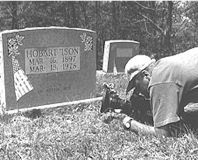Stranger With a Camera

In 1967 Canadian filmmaker Hugh O'Connor visited the mountains of Central Appalachia to document poverty. A local landlord, who resented the presence of filmmakers on his property, shot and killed O'Connor, in part because of his anger over the media images of Appalachia that had become icons in the nation's War on Poverty. Filmmaker Elizabeth Barret, a native of Appalachia, uses O'Connor's death as a lens to explore the complex relationship between those who make films to promote social change and the people whose lives are represented in such media productions. As director in the editing phase of Stranger with a Camera, Lucy recognized that the structure, pacing, poetry and even politics were determined in the editing room.
“...it was very personal because I was from Kentucky and I was a filmmaker and I felt like it was in a way it the struggle that I had always had can you be an insider and tell the truth or do you have to go away from home just to be an outsider? Bernice Regan had said to me when I was working on YGTM, you’ve fought in your own struggle and you’ve been completely engaged in the struggle for your people, and she said “Well, you’re a communicator and a communicator is sort of in the middle, making a bridge between one thing and another, one people and another. I feel like Stranger With a Camera was about that bridge and about prejudice....”


Silver Spire Award, 2000
San Francisco Film Festival
Contact: